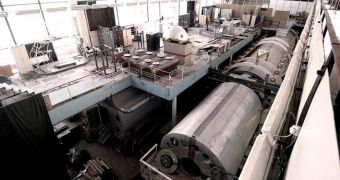The six members of an experiment meant to simulate the solitude of long-term space travel are getting ready to enter a new phase in their mission early next month. At that time, they will be simulating a Martian landing, a landmark achievement that will see them “exploring” the Red Planet for a month.
The goal of the Mars500 experiment is to see the psychological impact that space travel would have on a small crew of astronauts. The seclusion test will last for a total of 520 days.
This is about the amount of time needed for a spacecraft to take off from Earth, reach Mars, spend about a month there, and then return home. The six astronauts in this experiment are simulating exactly this type of scenario.
They have already exceeded the 230-day mark, which means that they are getting to the half-way point of their journey, and their landing on the Red Planet. Thus far, everything went well, they say.
The participants are allowed to record video logs, and to communicate with Mission Control. But the messages are delayed by the time it would take them to reach Earth if the capsules the fake astronauts are locked in were actually traveling through space.
Mars500 kicked off last June, when the hatch to the test facility, located at the Russian Academy of Sciences' Institute of Biomedical Problems (IBMP) in Moscow. China, Russia and the European Union manage this research project.
The six space flyers are bound to reach Mars on February 12. For the purpose of making the experiment shorter, only 2 days of Martian exploration are included in the calendar. Even so, if will take one and a half year for the experiment to conclude.
One of the main reasons why it is being conducted is that the human mind is right now the only obstacle that remains in the path of interplanetary space exploration. We have the technology and the funds to get to Mars, but do we have the manpower?
Boris Morukov, a former Russian cosmonaut and the Mars500 mission director, said recently that the crew is a bit tired (which is entirely understandable), but that the level of motivation is still high.
Space agencies also need to develop an advanced space shield that would protect future spacecraft from the vast amount of radiation that permeates the space between planets. Plans to do so are already under way, and preliminary tests on new materials are being conducted at space agencies around the world.
Three Russians, two Europeans and one Chinese currently inhabit the experiment, which features several modules and a Martian simulation chamber.
The latter is an enclosure that features a landscape reproduced from data on Mars collected by orbiters and landers, Space reports.

 14 DAY TRIAL //
14 DAY TRIAL //